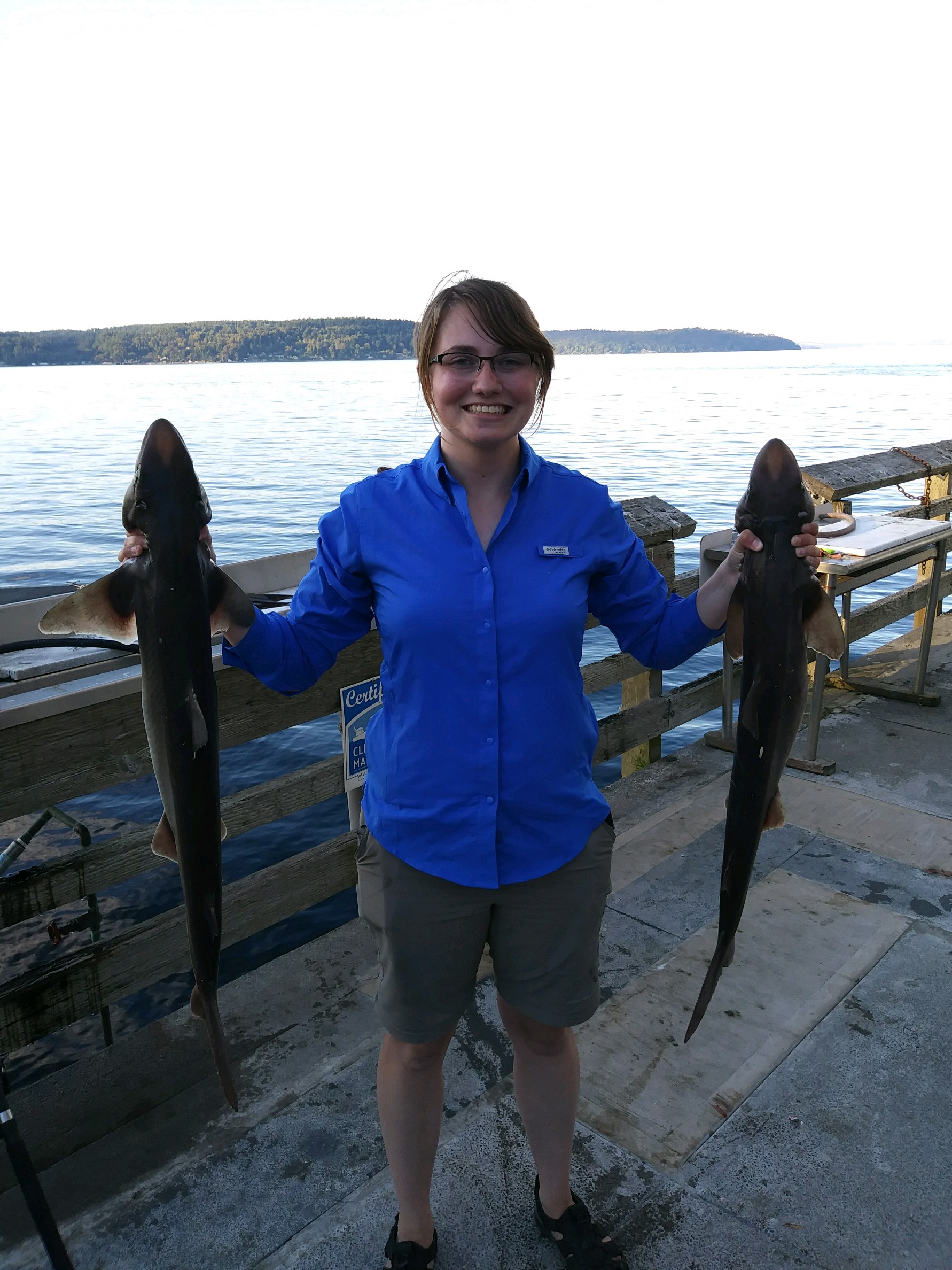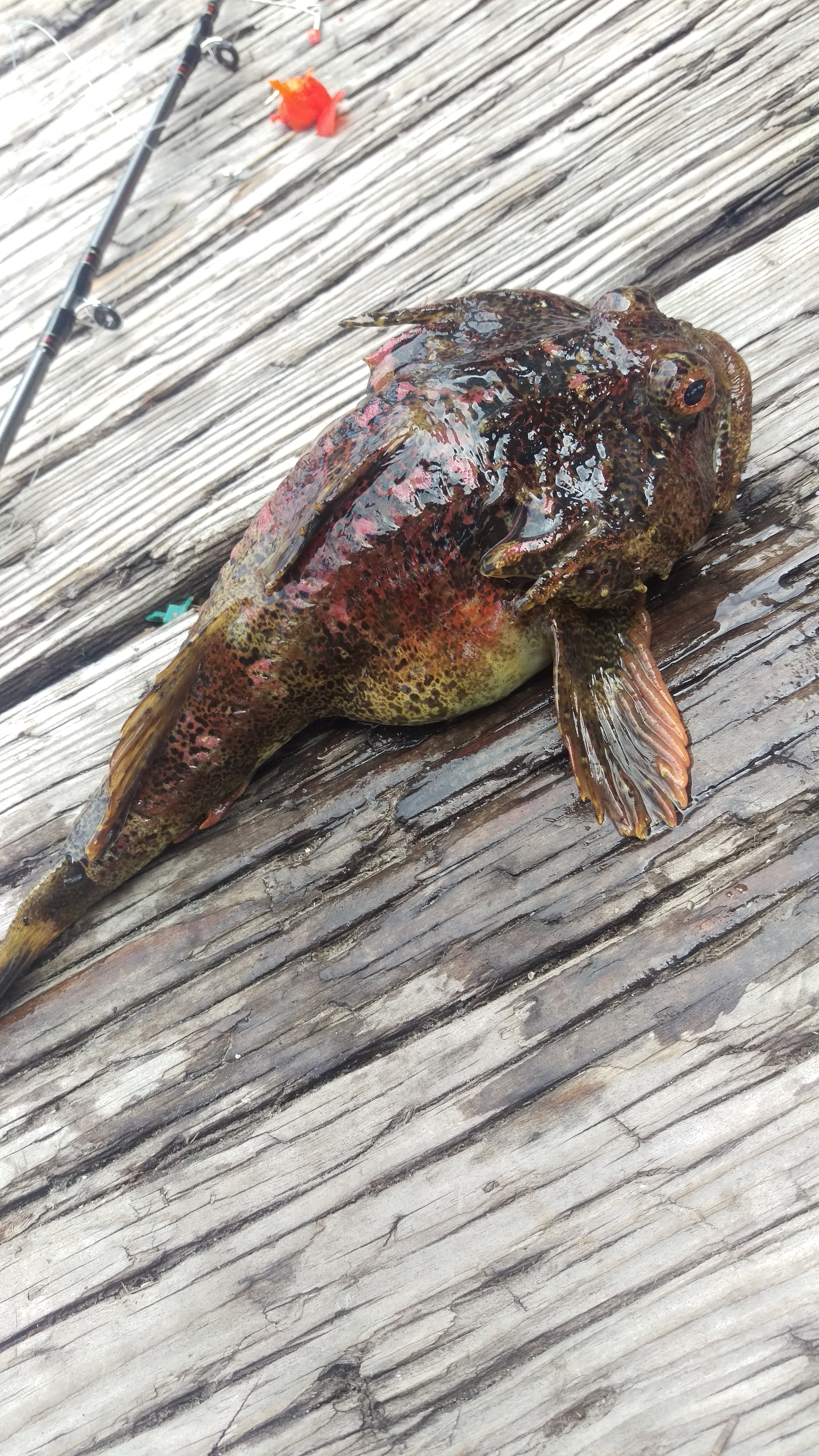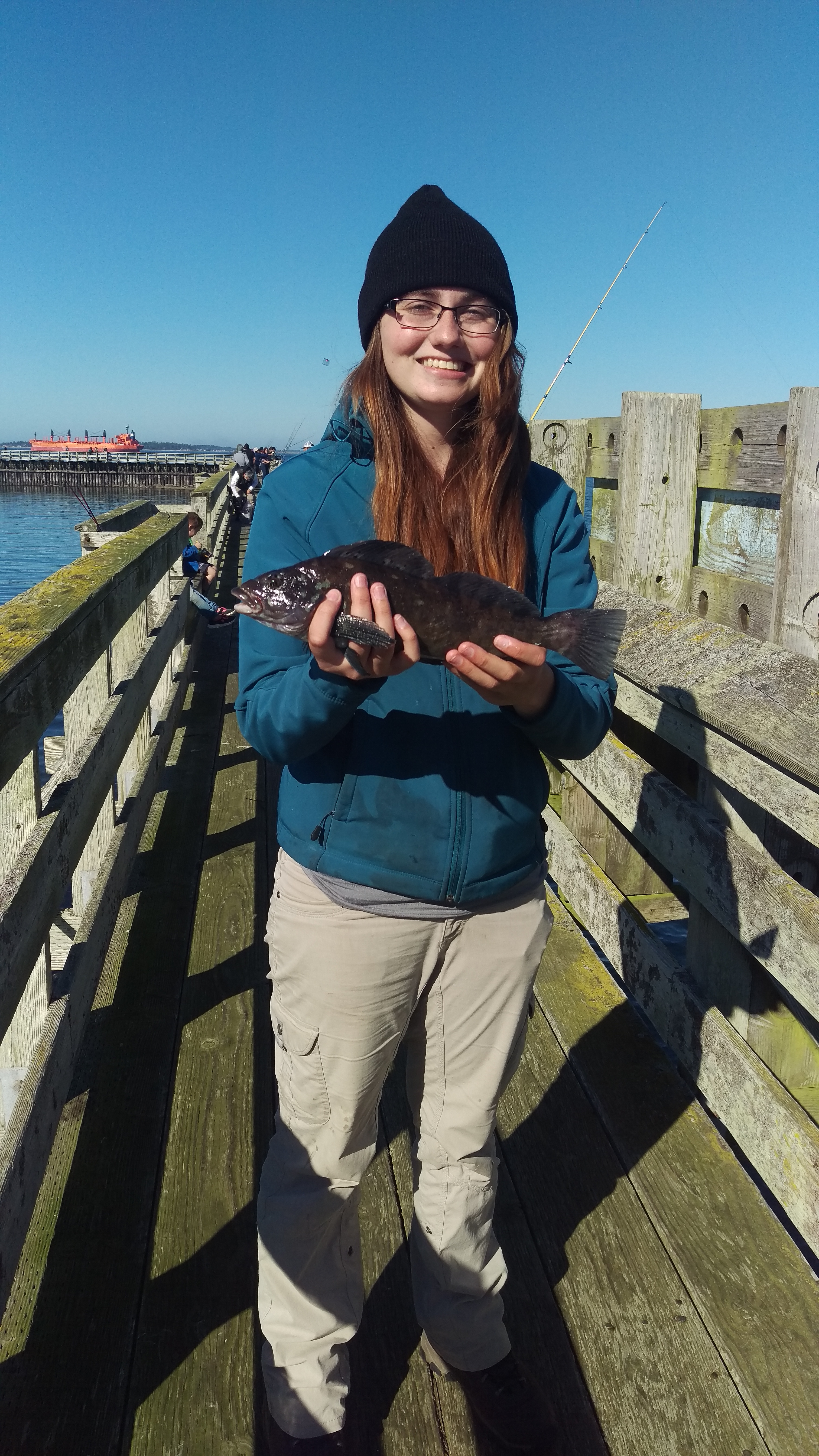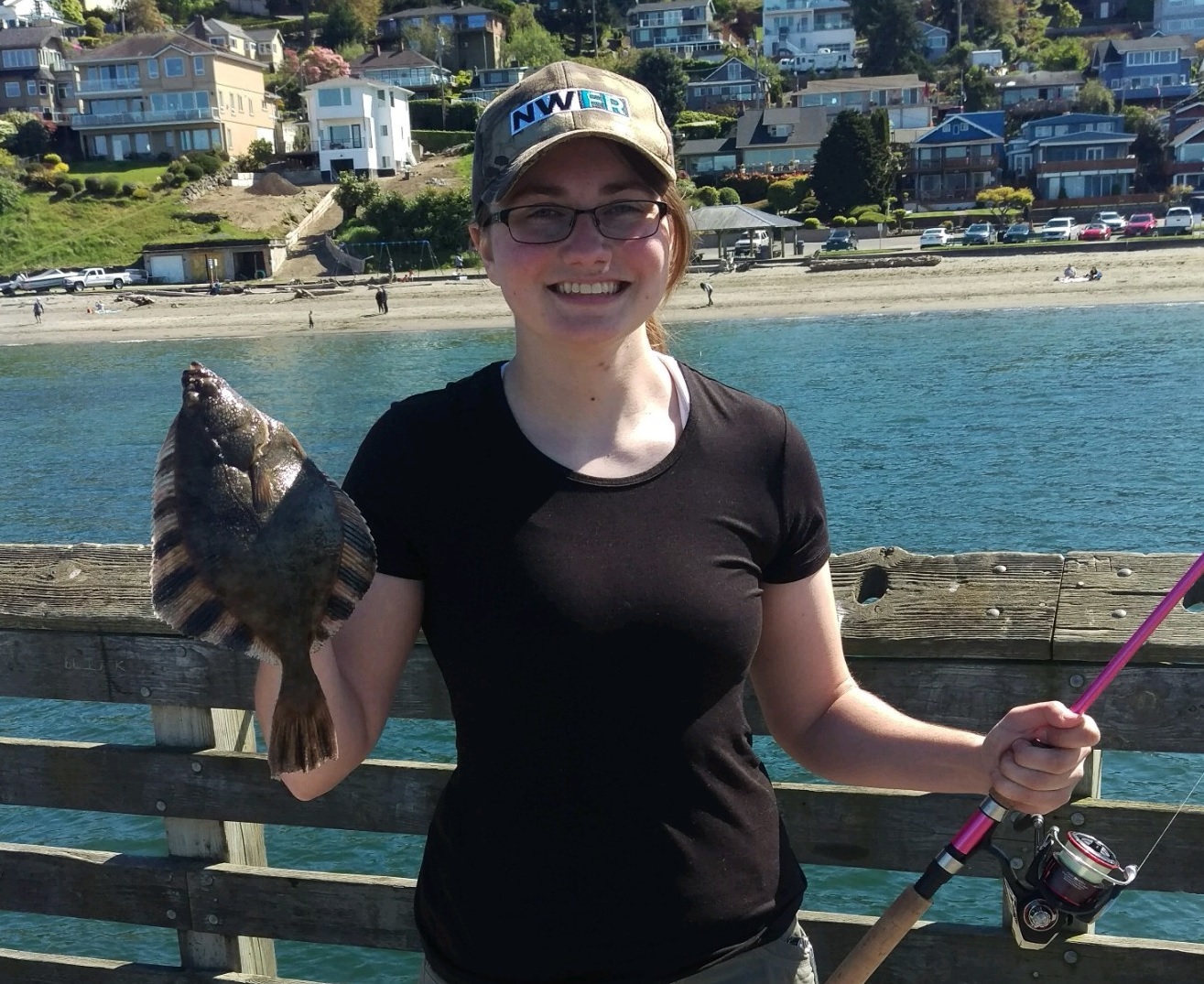Guide to Puget Sound Bottom Critters
by
Hannah Pennebaker , May 05, 2019
The bottom of Washington State's Puget Sound is swimming with all sorts of interesting fish, from the tasty striped perch to the venomous buffalo sculpin. You never quite know what you're going to reel in when you drop a line off your boat, or cast from a dock. All it takes to tempt one to strike your line is a simple high-low rig (a leader tied with two hooks on dropper loops), a sinker, and bait such as shrimp or squid. This is a general guide to the most common bottom dwellers in the Puget Sound; please check your local marine area rules before heading out. Depending on your marine area, there may be consumption advisories as well, view-able at WDFW's website.
Dogfish and Ratfish
Spiny dogfish, or sand sharks, are small sharks that can reach up to 4 feet in length. They are most active in deeper waters at night, usually in the height of summer. Herring is their favorite bait, to the woe of many hopeful salmon fishermen. Their meat is often sold overseas for "fish n chips". If you do decide to cook one, be sure to soak your fillets or steaks in lemon juice for several hours to diminish the ammonia taste. Ratfish are in the same family as dogfish, and are also night time feeders, but are not typically kept and eaten. Be extra careful when handling both these fish, as they have sharp spines protruding near their dorsal fins. If you are targeting these toothy fish, I recommend heavier test line or even wire leader. Cast far at a dock, or on a boat, fish at deep, sandy bottoms, keeping in mind the 120 feet depth restriction.
Sculpin
Sculpin are commonly found in all depths and bottom structures, in fact, in some places they are hard to keep off your line! They are spiny, green colored fish with hard mouths and large heads. There are three types of sculpin you'll find, each more outlandish looking than the last. These are pacific staghorn sculpin, buffalo sculpin, and red Irish lord. Beware of the venomous horns on the first two when handling. These are voracious fish that scavenge and eat smaller fish alike. As with ratfish, these are not commonly consumed. You can catch these spiny critters off a boat or by shore casting.
Flounder
These plentiful flatfish include starry flounder, sand dab, rock sole, and many other less common varieties. They occupy a high place on the food chain. Their diet consists of small fish, crustaceans, and shrimp. They are born with eyes on either sides of their heads, but as they mature one eye slowly moves over to the other side. Found within a variety of depths and bottom structures, these are a commonly targeted fish in the Sound. You can catch them at most docks, including Dash Point and Redondo. As for boats, rock sole tend to be in shallower muddy or rocky habitats, while sand dabs live in deeper, sandy water, 90 feet or even deeper. Starry flounder are most common in the Nisqually Delta, but are an incidental catch in brackish water near rivers and streams. Most flounder are quite delicious in the frying pan, whole or filleted, and have generous daily limits.
Lingcod, Cabezon, and Greenling
These fish inhabit the rockier areas of the Sound. Lingcod are massive ambush predators, the top of the food chain. The largest lingcod caught in Washington State weighed in at 61 pounds! They are extremely aggressive, especially during their mating season, when they defend their dens. Cabezon, a large sculpin, primarily feast on crustaceans. Their meat is a unique blue color until cooked. Some speculate this is from the iodine in their crustacean diet. Their name means "big head" in Spanish. Female lingcod can also have blue meat. Both cabezon and lingcod are prized catches. They make excellent fish tacos or even fish sandwiches. These fish have limited seasons and reduced limits to prevent overfishing. There is even a short spearfishing season for lingcod! Kelp greenling, often found in the same habitats as cabezon and lingcod, can be a tad difficult to identify, as the males and females have different colors and patterns. Generally, the males are reddish with blue to green spots, and the females are gray with yellow tipped fins. Handling these smaller fish is easy because they have no spines or teeth, but they put up a good fight on the line. These are not as endangered as the larger cabezon and lingcod, so they count toward your daily bottomfish limit. They are sometimes called "sea trout" because of their taste, and they make great fish n chips. As their name suggests, your best chance to catch them is in shallow kelp beds.
Perch
The main varieties of perch in the Sound include the small shiner perch, striking striped perch, and silvery pile perch. Schools of shiner perch often drift around in the warmer months, visible from the surface. These tiny fish make great stew. Striped perch resemble aquarium fish with their iridescent sheen. Along with pile perch, these are best eaten whole, tossed with some corn starch and seasoning. Perch are most often caught from docks or shore. They school up just off the bottom, often around pilings and other structure. These also count toward your daily bottomfish limit.
Rockfish
Rockfish are some of the most beautiful fish we have in the Sound. There are a massive variety, from black rockfish to vermilion rockfish, also known as red snapper. They are long lived fish that typically dwell in rocky bottoms, hence the name. I mention these fish last because they are unfortunately prohibited to fish for or retain in the Sound. All bottom fishing boats must have a fish descending device on board. This is because rockfish easily suffer from barotrauma when yanked from the depths. This reduces their survival rate when simply thrown back, as they cannot swim back down due to their inflated swim bladder. Be aware that there is a 120 feet depth restriction for boats when bottom fishing, to protect rockfish. If you do want to try rockfish, areas on the coast such as Westport and Ocean Shores are open to black rockfish retention, and limited canary and yelloweye rockfish harvest.
Other Critters
There is always the chance you'll hook onto other marine animals that aren't necessarily fish! I have pulled up sea cucumbers, small octopus, and starfish. Incredibly rare pacific cod, pacific hake, skate, and wolf eels also patrol the depths. Whether you're an experienced saltwater fisherman or just looking to try something new, you can never be sure what's on your line in the Puget Sound. Go out and see what you'll find!
Hannah Pennebaker graduated from Pacific Lutheran University with a degree in Environmental Studies. She enjoys both freshwater and saltwater fishing adventures in the Puget Sound area with her fishing group, the Straw Hat Fishermen.
Comments
Why is this comment inappropriate?
Delete this comment? Provide reason.




